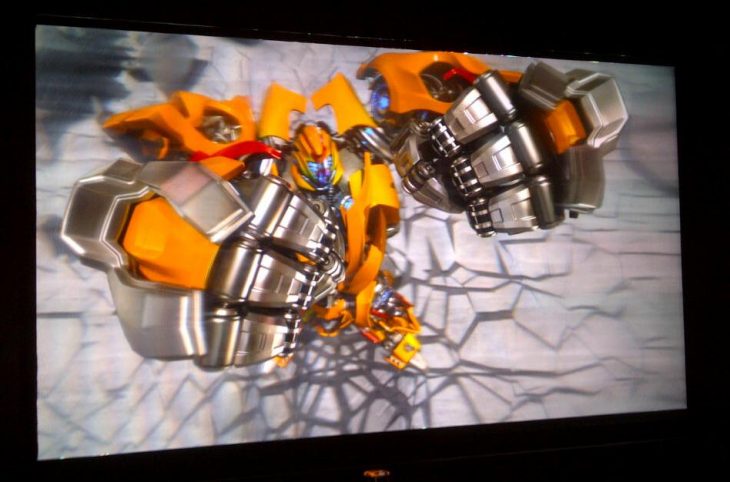
LAS VEGAS – The newly established NAB Labs (actually, it’s kind of hard to believe there hasn’t always been an NAB Labs to push technology, but…) had space set aside on the NAB Exhibit Floor in the North Hall this year called the International Research Park, which was a little mind blowing in some instances – and also featured fair bit of Canadian content.
We’ll get to that in a minute because what most people were talking about were two experimental technologies from Japan’s National Institute for Information and Communications Technology (NICT), a fully immersive 3DTV sensory experience where viewers, wearing some substantial gear, could see, hear, feel and smell television… (they did not call it smell-o-vision)
Beside that was NICT’s 200-inch, glasses-free HDTV screen (check out the big robot). Now, the screen was not the easiest thing to look at and required, we were told, 200 individual projectors behind the screen somewhere, but it was awfully cool. The effect of the still and moving images were amazing because as you moved around, perspectives changed, a bit like the “bullet-time” movie shots. But what it really looked like to these eyes was a supercharged and very large lenticular print normally found in kids books and toys.
Ryerson University was well-represented at the show too, as 70 students involved in the broadcasting and media arts education program came down, by far the largest group of students from any educational institution. Rye students had a number of demonstrations on display too, including a robotic tilt-pan-zoom camera working through an Xbox Kinect, that had enough intelligence built in to find who was speaking, find and focus in on them. Very nifty.

The Communications Research Centre of Canada was showing in its booth what could be done projecting 3D on a curved screen (flat on the floor and gently curved upwards), The small change gave a dramatic effect as the subject on screen was suddenly grounded. It had a real-looking floor and no longer appeared like a floating 3D apparition hovering above the landscape, as some 3D can appear.
The CRC is also attempting to develop processes that would maximize spectrum efficiency by eliminating the TV white spaces (the spectrum between TV channels). Dr. Yiyan Wu (pictured during the IRP’s press conference), of the CRC told us that technology is two to three years away from being deployable, “but we have confidence this is a very promising technology,” he said,

One more neat-o propeller-head experiment we saw may some day let those who are both blind and deaf to listen to radio. National Public Radio Labs said it is working on Braille Radio where captions from closed-captioned radio for the deaf (something else NPR is working on) would be transmitted somehow to a refreshable Braille display device.
Cartt.ca editor and publisher Greg O'Brien is in Las Vegas this week covering the 2012 NAB Show.



